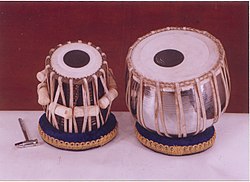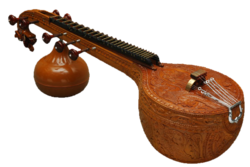
South Asian music comprises a range of prominent musical genres and styles that are unique to the countries in and around the Indian subcontinent. This subregion of Asia includes countries such as India, Afghanistan, Bangladesh, Bhutan, Maldives, Nepal, Pakistan, and Sri Lanka, with each region one possessing its own distinct musical traditions. South Asian styles of music reflect a diverse range of local customs, regional languages and historical traditions, that have shaped the musical practices which are still seen today. [1] Throughout history, South Asian musicians have emulated religious and spiritual beliefs into their compositions, resulting in the creation of musical styles such as Qawwali, Ghazal and Hindustani classical music. The development of forms of mass media in the 1980s and 1990s contributed to a new type of South Asian musical culture, as the rise of cinema and television resulted in the popularity of genres such as Bollywood and Lollywood. As a result of social media and modern streaming networks, folk and ritual music styles are still widely appreciated today, with many modern artists taking inspiration from the classical traditions that defined the history of South Asian music. [2]
















